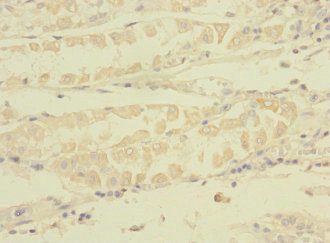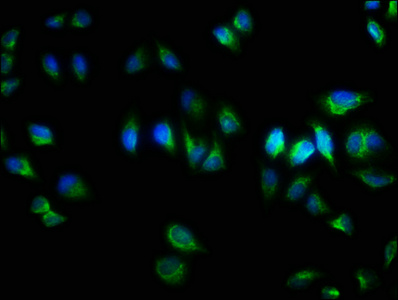Full Product Name
Rabbit anti-Homo sapiens (Human) TNRC6A Polyclonal antibody
Alternative Names
CAG repeat protein 26 antibody; CAGH26 antibody; DKFZp666E117 antibody; EDIE antibody; EMSY interactor protein antibody; FLJ22043 antibody; Glycine tryptophan protein of 182 kDa antibody; Glycine-tryptophan protein of 182 kDa antibody; GW1 antibody; GW182 antibody; GW182 autoantigen antibody; Hypothetical protein DKFZp566M143 antibody; KIAA1460 antibody; MGC75384 antibody; OTTHUMP00000122485 antibody; OTTHUMP00000195164 antibody; OTTHUMP00000195165 antibody; Protein GW1 antibody; TNR6A_HUMAN antibody; TNRC 6A antibody; TNRC6 antibody; Tnrc6a antibody; Trinucleotide repeat containing 6A antibody; Trinucleotide repeat containing gene 6A protein antibody; Trinucleotide repeat-containing gene 6A protein antibody
Immunogen
Recombinant Human Trinucleotide repeat-containing gene 6A protein (1-161AA)
Immunogen Species
Homo sapiens (Human)
Conjugate
Non-conjugated
The TNRC6A Antibody (Product code: CSB-PA839859LA01HU) is Non-conjugated. For TNRC6A Antibody with conjugates, please check the following table.
Available Conjugates
| Conjugate |
Product Code |
Product Name |
Application |
| HRP |
CSB-PA839859LB01HU |
TNRC6A Antibody, HRP conjugated |
ELISA |
| FITC |
CSB-PA839859LC01HU |
TNRC6A Antibody, FITC conjugated |
|
| Biotin |
CSB-PA839859LD01HU |
TNRC6A Antibody, Biotin conjugated |
ELISA |
Purification Method
>95%, Protein G purified
Concentration
It differs from different batches. Please contact us to confirm it.
Buffer
Preservative: 0.03% Proclin 300
Constituents: 50% Glycerol, 0.01M PBS, PH 7.4
Tested Applications
ELISA, IHC, IF
Recommended Dilution
| Application |
Recommended Dilution |
| IHC |
1:20-1:200 |
| IF |
1:200-1:500 |
Storage
Upon receipt, store at -20°C or -80°C. Avoid repeated freeze.
Lead Time
Basically, we can dispatch the products out in 1-3 working days after receiving your orders. Delivery time maybe differs from different purchasing way or location, please kindly consult your local distributors for specific delivery time.
Usage
For Research Use Only. Not for use in diagnostic or therapeutic procedures.








